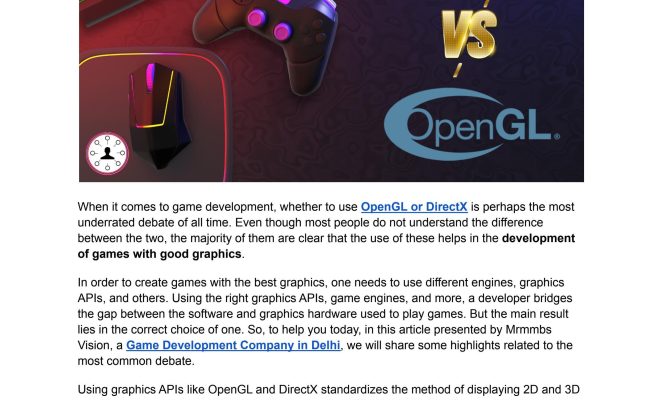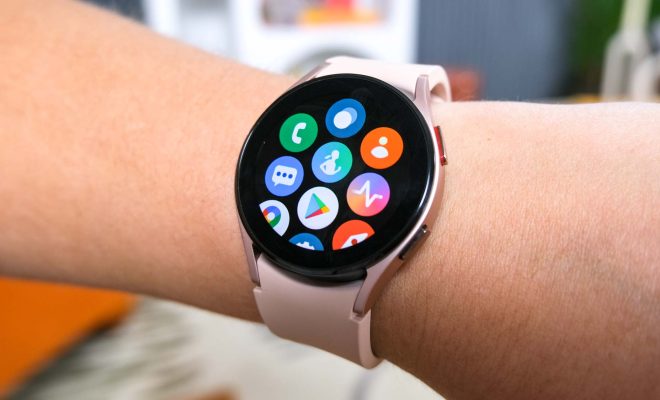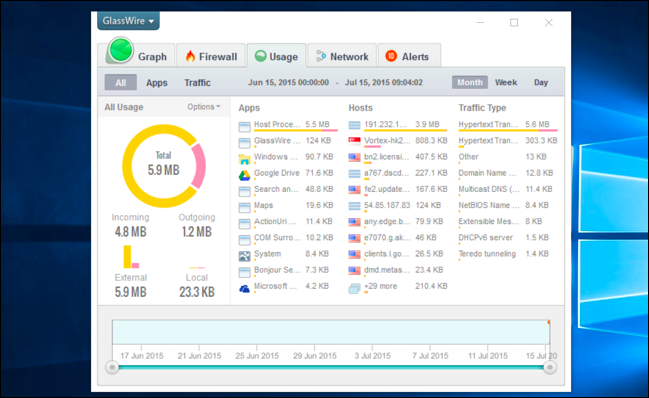OpenGL vs. DirectX: Which Should You Use for Game Development?

Game development is a fascinating field that requires a lot of technical knowledge and expertise. One of the critical decisions game developers must make is choosing the right graphics API to use for their game. Two of the most popular graphics APIs used in game development are OpenGL and DirectX. While both graphics APIs are great choices for game development, each has its advantages and disadvantages that potential game developes should compare to make the right choice. In this article, we will explore the pros and cons of each and which one game developers should use for their games.
OpenGL vs. DirectX: What Are They?
OpenGL and DirectX are both Application Programming Interfaces (APIs) used for creating computer graphics. They both provide access to the underlying hardware in a way that allows game developers to write graphics applications.
OpenGL is an open-source cross-platform API that allows developers to create high-quality computer graphics in a variety of programming languages such as C++, Python, and Java. It was created in 1991 by Silicon Graphics, Inc. (SGI). OpenGL is known for its flexibility and ease of use, making it popular among developers creating games for multiple platforms.
On the other hand, DirectX is a proprietary graphics API developed by Microsoft. It was first released in 1995 for Windows 95 and has been the default graphics API for all Windows operating systems. DirectX consists of several different components, including Direct3D (which allows developers to create 3D graphics), DirectSound (for playing audio), and DirectInput (for handling input devices such as keyboards and gamepads).
OpenGL vs. DirectX: Advantages and Disadvantages
OpenGL and DirectX are both great choices for game development, but they each have their pros and cons.
Advantages of OpenGL:
1. Cross-Platform: OpenGL is cross-platform and can run on multiple operating systems, including Windows, Linux, and macOS.
2. Open-Source: The source code of OpenGL is available to anyone, allowing developers to customize it to their liking.
3. Flexibility: OpenGL is flexible and allows developers to choose the level of detail they want to use in their games, allowing for better optimization.
4. Community: OpenGL has a vast community of developers who have created many resources, libraries and online forums to help developers.
Disadvantages of OpenGL:
1. Lack of Standardization: OpenGL is generally less standardized compared to DirectX, meaning developers may have to modify their code for compatibility with different GPUs and hardware.
2. Learning Curve: It can take more effort to learn OpenGL, as it relies on a lower-level programming model than DirectX.
3. Performance: Although it can be optimized to give good performance, OpenGL can have higher overhead to generate the same graphics as DirectX due to how hardware drivers are designed.
Advantages of DirectX:
1. Standardization: DirectX is more standardized than OpenGL, which means there is less configuration needed to make it work.
2. Ease of Use: DirectX is generally easier to use compared to OpenGL, which can make it more accessible to beginners.
3. Compatibility: DirectX comes pre-installed on Windows, and most Windows games use DirectX, making it easier to develop games for that platform.
4. Performance: DirectX is designed to work with Windows, which makes it more efficient and faster than OpenGL.
Disadvantages of DirectX:
1. Proprietary: DirectX is proprietary and only works with Windows, which can make it more restrictive.
2. Learning Curve: Although it is easier to use than OpenGL, DirectX still requires an advanced understanding of programming languages like C++.
3. Restricted Community: The community and resources dedicated to DirectX are not as widespread as OpenGL.
OpenGL vs. DirectX: Which Should You Use?
The choice between OpenGL and DirectX ultimately depends on the specific needs of your game development project. Here are some key indicators that can help make a choice:
If you want to develop for multiple platforms, OpenGL may be the better choice as it is cross-platform.
If you develop on Windows and are not concerned about compatibility with other platforms, DirectX may be the better choice.
If you are looking for an easier-to-learn API, DirectX is more accessible than OpenGL.
If you are developing advanced graphics applications and need full control over the code and the hardware, OpenGL is the better choice.






